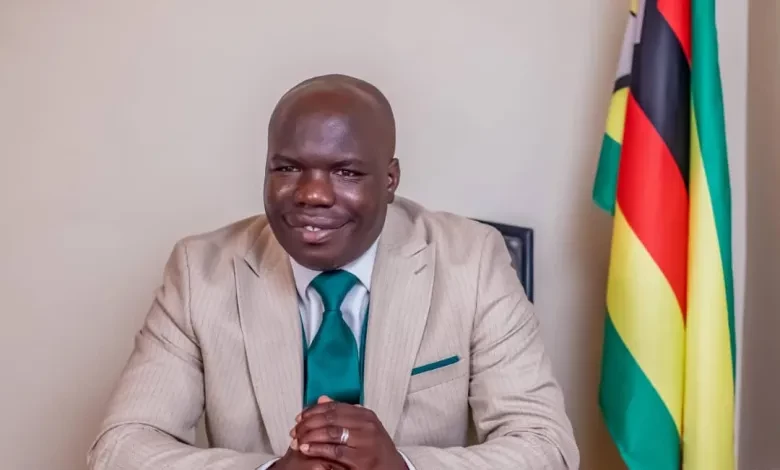
The arts industry is characterised by precarious unemployment, unpaid work and short lived careers.
Many artists have portfolio careers where they do a mixture of jobs while competing for the limited funding and limited career opportunities in the arts sector.
The reality of Covid-19 was one blow that hit many of artists, as it exposed the lack of permanent jobs in the sector, and the challenge of lack of viability of the arts industry as a means of livelihood.
The rhetorical question that I ask is on the sustainability of the arts industry in the country, enabling the artists to fend for their families and also meet their needs.
In Zimbabwe, many of us artists work as freelancers or on a self-employed basis without access to sick leave or other entitlements such as pensions. I guess this is the plight of many Zimbabweans at large who in their everyday survival it is always a hand-to-mouth lifestyle.
I guess we have seen many artists that have died as paupers with nothing to their name despite having curated and created artworks that we still admire and also vibe to. This is also another factor that makes us question if in Zimbabwe there can be a possibility of creatives having a sustainable career.
A sustainable career is one in which an artist is making money to the extent that one can live and prepare for their retirement. For many of us artists, it is about the everyday bread and butter issues, putting a roof on our heads and feeding ourselves.
A sustainable career has to enable one to be able to meet the everyday basic needs, and hence the artists have to benefit from their career.
- Young entrepreneur dreams big
- Chibuku NeShamwari holds onto ethos of culture
- Health talk: Be wary of measles, its a deadly disease
- Macheso, Dhewa inspired me: Chinembiri
Keep Reading
But our Zimbabwean context presents a difficulty for many artists who remain ravaged by the impact of the poor economy, which makes the whole industry to be non-profitable.
Note should be taken that I have used the word “industry”, which evokes a sense of an entity that has economic value and viability.
The creative industries include music, performing arts, like acting, and visual arts, and painting. Crafts, such as weaving, furniture-making and jewelry-making, film, TV, animation, visual effects, video, radio and photography are also part of the industry.
But is the so-called, but cold art “industry” thriving, and are artists in the country making a living? Can we be also safe to call it an industry?
These are some of the questions with regards to the sustainability of the arts sector.
It remains imperative that as society we should understand how lower incomes are associated with poorer mental health and wellbeing. And these lower incomes also affect the artists as creatives. There has to be value for the artistic service provided.
Another question is that of why artists make millions but are always in debt?
A sad reality is that the celeb culture has made quite a lot of artists to live a lie and be indebted. When they make a “buck”, they extravagantly spend the money leading them to depression.
As we ponder on this, we should also not overlook the impact of drug abuse and how it has affected many creatives leaving them broke and in debt.
Others are affected by issues of indulging in numerous ‘love’ affairs.
Artists can have successful exhibitions that can be collected by national and international institutions and still not make a sustainable living. We have heard stories of many artists that are not being paid for their work.
I have practical experience of the moments when I was in a band, and one club manager would give us an equivalent of transport money as pay, which had no value at all. His reason was that we were an unknown band and still auditioning.
This continually happens in many cases where producers, musicians, film makers, dancers, and actors are not well paid or are given peanuts, which leads them to languish in poverty. It makes me wonder on what makes the art “industry” to be under-paying? Is it the quality of the art? Is it the calibre of the artists? Is it an un-appreciative and hard hearted audience? Or it is the volatile economic situation of Zimbabwe?
These are deep thoughts we should ponder on as the arts sector to be sustainable. Working in the performing arts involves both physical demands and mental strain.
The arts audience has the obsessive requirement for the artist to be excellent all the time, and it leads to consistent performance-related anxiety.
As an artist, for example, I work outside of ordinary business hours, and face the need to travel where the work is. I have seen many of my arts peers quit the arts sector the moment they start to have a family.
The economic hurdles faced by artists have led them to abandon their careers and this shows the tricky nature of the viability of the arts sector as a sustainable career which can put food on the table.
These pressures arise from both the limited opportunities and intense competition within the arts and culture sector, which make many people feel they have to accept any opportunity and work under any conditions in order not to be left behind.
This is why the excuse of “exposure” has been used where many artists are told that they can perform as opening acts for free.
They then take it as a moment where they can be seen and shine which is never the case. It is actually a moment when an artist can be affected by exploitation using the mirage of opportunity, which remains a dream shrouded in obscurity for many artists.
However, I have seen some curtain raisers even out-performing the main act. It is possible and new artists must not allow exploitation.
This is why many artists die poor because they have been taken advantage of, and they become victim to abstract contractual agreements where they are swindled of their royalties, hard work and intellectual property.
Gender inequity presents one barrier to career sustainability. It is even worse for the marginalised deaf and disabled artists, regional and remote artists, and artists from lower socio-economic backgrounds face even greater challenges.
The obvious solution is more abundant and on-going public and philanthropic support coming especially from the fans as they appreciate the power and the potential of the arts.
Increased government funding for the arts is the first and most important step in the career sustainability of artists because it flows through everything else.
But other creative solutions are also needed to make artistic careers more sustainable.
These include: increasing diversity within arts sector leadership; teaching student artists to develop an “adaptive entrepreneurial identity”; and fostering community and collective support among artists and arts managers.
Raymond Millagre Langa is a musician, poet, orator and independent researcher. He is also the founder of Indebo edutainment Trust. Follow Raymond Millagre Langa @Millagre Ray Langa on Facebook, @Millagre Langa on twitter and email millagrepapaito@gmail.com or [email protected]










